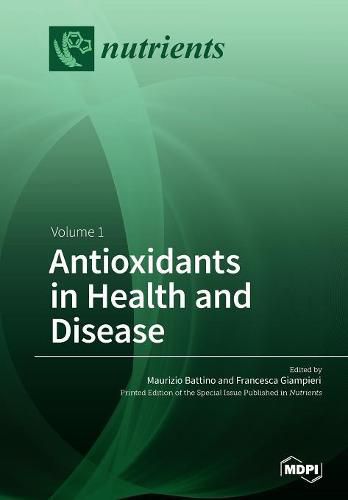Readings Newsletter
Become a Readings Member to make your shopping experience even easier.
Sign in or sign up for free!
You’re not far away from qualifying for FREE standard shipping within Australia
You’ve qualified for FREE standard shipping within Australia
The cart is loading…






This title is printed to order. This book may have been self-published. If so, we cannot guarantee the quality of the content. In the main most books will have gone through the editing process however some may not. We therefore suggest that you be aware of this before ordering this book. If in doubt check either the author or publisher’s details as we are unable to accept any returns unless they are faulty. Please contact us if you have any questions.
Several epidemiological studies have demonstrated that oxidative stress is associated with a number of health disorders, including cardiovascular malfunction, certain types of cancer, diabetes mellitus, many other auto-immune diseases, and even ageing. The body possesses multiple mechanisms to counteract oxidative stress, which employ antioxidant compounds that are either naturally generated in situ (endogenous antioxidants) or externally supplied through food (exogenous antioxidants). These antioxidants are able to counteract oxidative stress, thanks to their ability to neutralize excess free radicals and protect the cellular lipids, proteins, and DNA from molecular damage. Exogenous antioxidants from the diet are of increasing interest because of their beneficial role in maintaining good health and in preventing chronic diseases. Indeed, a diet rich in dietary antioxidants, especially from fruits and vegetables, has been correlated with a successful prevention and lower incidence of several degenerative pathologies, including obesity, diabetes, cardiovascular diseases, and cancer.
This Special Issue of Nutrients welcomes the submission of manuscripts, either describing original research or reviewing scientific literature, examining the role of diets rich in antioxidant compounds in the prevention of chronic diseases and the characteristics of the antioxidants included in such diets.
$9.00 standard shipping within Australia
FREE standard shipping within Australia for orders over $100.00
Express & International shipping calculated at checkout
This title is printed to order. This book may have been self-published. If so, we cannot guarantee the quality of the content. In the main most books will have gone through the editing process however some may not. We therefore suggest that you be aware of this before ordering this book. If in doubt check either the author or publisher’s details as we are unable to accept any returns unless they are faulty. Please contact us if you have any questions.
Several epidemiological studies have demonstrated that oxidative stress is associated with a number of health disorders, including cardiovascular malfunction, certain types of cancer, diabetes mellitus, many other auto-immune diseases, and even ageing. The body possesses multiple mechanisms to counteract oxidative stress, which employ antioxidant compounds that are either naturally generated in situ (endogenous antioxidants) or externally supplied through food (exogenous antioxidants). These antioxidants are able to counteract oxidative stress, thanks to their ability to neutralize excess free radicals and protect the cellular lipids, proteins, and DNA from molecular damage. Exogenous antioxidants from the diet are of increasing interest because of their beneficial role in maintaining good health and in preventing chronic diseases. Indeed, a diet rich in dietary antioxidants, especially from fruits and vegetables, has been correlated with a successful prevention and lower incidence of several degenerative pathologies, including obesity, diabetes, cardiovascular diseases, and cancer.
This Special Issue of Nutrients welcomes the submission of manuscripts, either describing original research or reviewing scientific literature, examining the role of diets rich in antioxidant compounds in the prevention of chronic diseases and the characteristics of the antioxidants included in such diets.